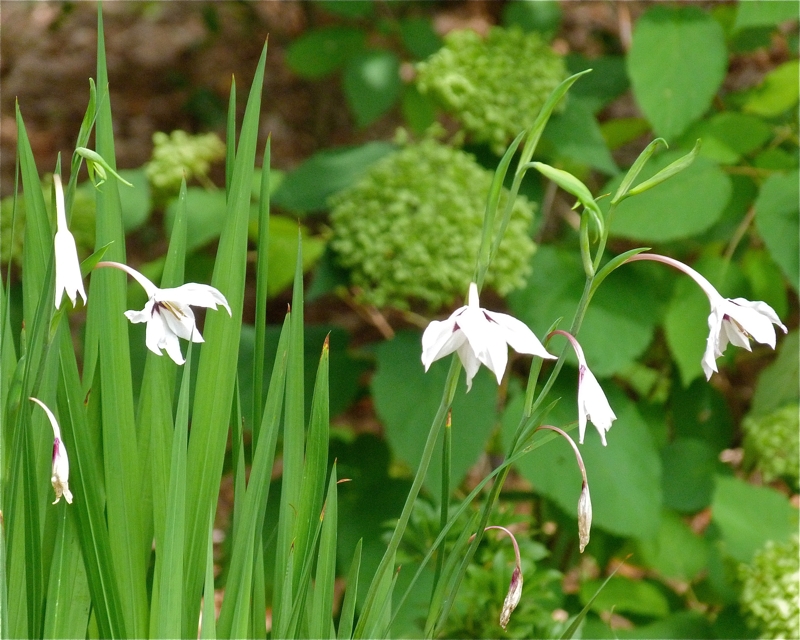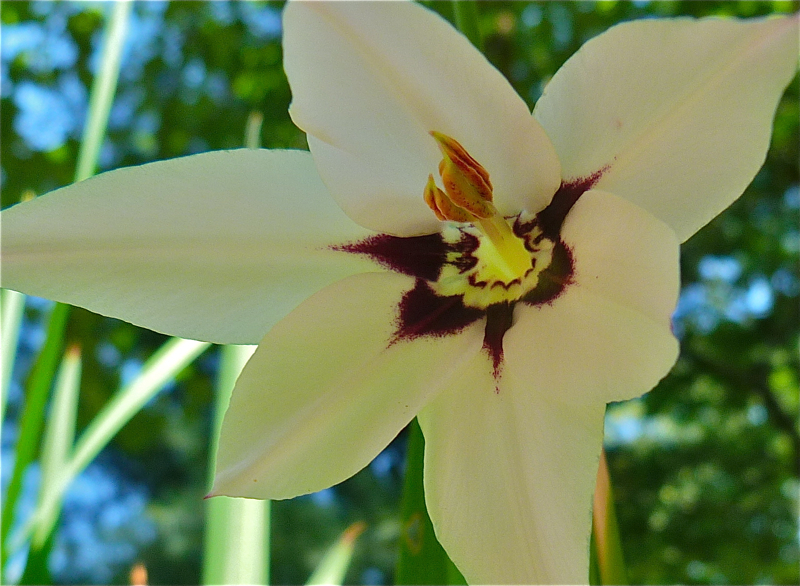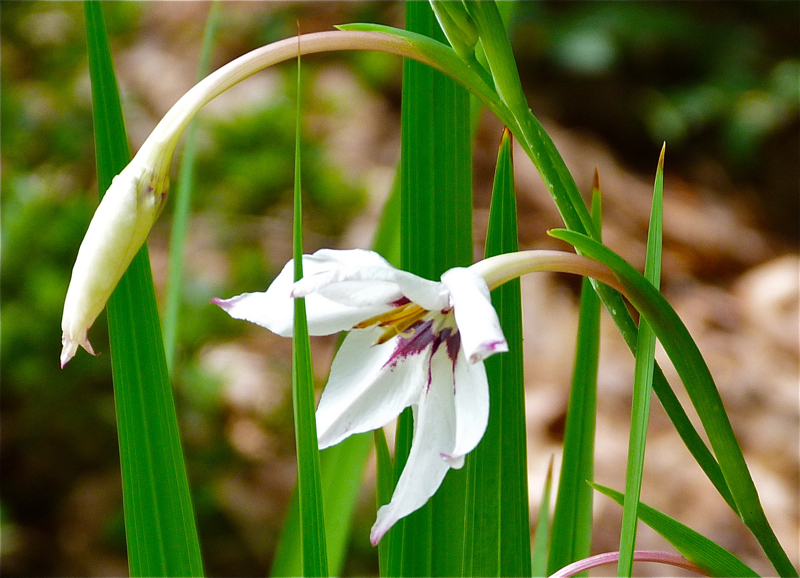Peacock Orchid
 Monday, July 25, 2011 at 5:00AM
Monday, July 25, 2011 at 5:00AM Peacock orchid is an unusual flower with strappy green leaves and white flowers with deep maroon centers. The flowers have a light, clean fragrance that reminds me of mild soap. Deer are not attracted to them, and I suspect it's the fragrance they don't like. It is not an orchid at all, though it does look like one. The name Gladiolus callianthus tells us it is actually a member of the gladiolus family. I'm not a big glad fan, but these are wonderful! One group of peacock orchids is planted along my hydrangea walk.
One group of peacock orchids is planted along my hydrangea walk. A closer look at the orchid-like flower
A closer look at the orchid-like flower
I planted these bulbs for the first time this year and am waiting to see how successful they will be, but so far I am pleased. They need a long, hot growing season. I planted mine in April, and they just started blooming this week. They should bloom till mid fall, here in my zone 7b climate. The leaves are about thirty inches tall, and I have not needed to stake them. They have stood tall, even after torrential rains.
Peacock orchids need loose, well drained soil. They also like sun to partial shade and may do better with protection from the hottest afternoon sun. These plants do need consistent moisture, and I was diligent to keep them watered through our June drought. Fortunately, we have had plenty of rain in July, and the peacock orchids have grown well. Each bulb produces six to eight frangrant blooms.
Each bulb produces six to eight frangrant blooms.
Peacock orchids will grow in the ground and naturalize in zones 7-10. In zones with shorter growing seasons, start these indoors on a sunny windowsill, then transplant them outside when the weather warms up. Peacock orchids also do well in pots. In cooler climates gardeners should treat them as annuals or else dig the corms in fall. I plan to leave mine in the ground, covered with a good layer of mulch. I am eager to see if they will come back next year and grow again in my garden. A lot of plants do well the first year, but it's the second and third years that tell the true story!
 Permalink
Permalink  Peacock orchid,
Peacock orchid,  summer flowers in
summer flowers in  perennials,
perennials,  summer flowers
summer flowers 

